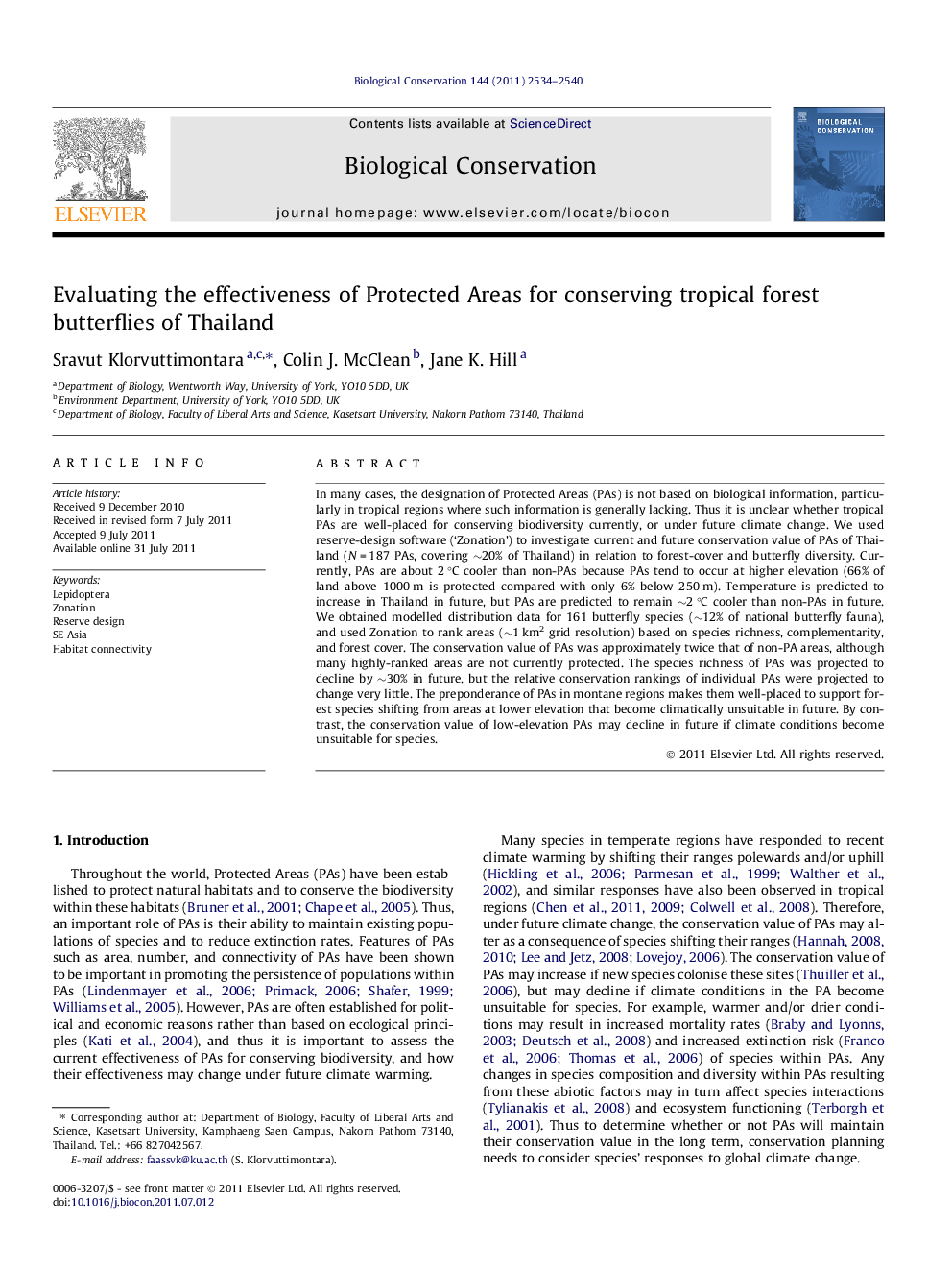| کد مقاله | کد نشریه | سال انتشار | مقاله انگلیسی | نسخه تمام متن |
|---|---|---|---|---|
| 4385422 | 1304535 | 2011 | 7 صفحه PDF | دانلود رایگان |

In many cases, the designation of Protected Areas (PAs) is not based on biological information, particularly in tropical regions where such information is generally lacking. Thus it is unclear whether tropical PAs are well-placed for conserving biodiversity currently, or under future climate change. We used reserve-design software (‘Zonation’) to investigate current and future conservation value of PAs of Thailand (N = 187 PAs, covering ∼20% of Thailand) in relation to forest-cover and butterfly diversity. Currently, PAs are about 2 °C cooler than non-PAs because PAs tend to occur at higher elevation (66% of land above 1000 m is protected compared with only 6% below 250 m). Temperature is predicted to increase in Thailand in future, but PAs are predicted to remain ∼2 °C cooler than non-PAs in future. We obtained modelled distribution data for 161 butterfly species (∼12% of national butterfly fauna), and used Zonation to rank areas (∼1 km2 grid resolution) based on species richness, complementarity, and forest cover. The conservation value of PAs was approximately twice that of non-PA areas, although many highly-ranked areas are not currently protected. The species richness of PAs was projected to decline by ∼30% in future, but the relative conservation rankings of individual PAs were projected to change very little. The preponderance of PAs in montane regions makes them well-placed to support forest species shifting from areas at lower elevation that become climatically unsuitable in future. By contrast, the conservation value of low-elevation PAs may decline in future if climate conditions become unsuitable for species.
► Protected Areas (PAs) are ∼2 °C cooler than non-PAs and occur at higher elevation.
► PAs are predicted to remain ∼2 °C cooler than non-PAs in future.
► The conservation value of PAs was approximately twice that of non-PA areas.
► Relative conservation values of individual PAs were projected to change very little.
► PAs are well-placed to receive species shifting from lower-elevation areas.
Journal: Biological Conservation - Volume 144, Issue 10, October 2011, Pages 2534–2540